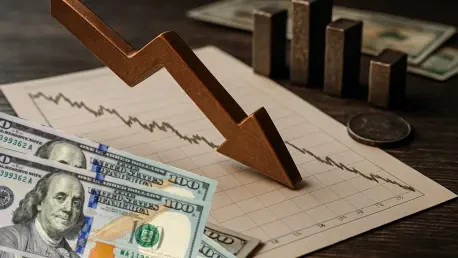In an era of economic uncertainty, where every fluctuation in the market sends analysts scrambling for answers, some of the most unexpected signals might just be hiding in plain sight. While traditional metrics like GDP growth and unemployment rates dominate headlines, a growing curiosity surrounds unconventional indicators that could hint at a looming recession. From everyday items to obscure social trends, these offbeat clues offer a fresh perspective on the health of the economy, even if their reliability remains under scrutiny. As consumer sentiment wavers and inflation pressures mount, exploring these unusual markers provides a unique lens through which to view potential downturns. The challenge lies in discerning whether these quirky signs hold genuine predictive power or are merely coincidental quirks in a complex system. This discussion delves into both the established definitions of economic decline and the lesser-known, yet intriguing, signals that might warn of trouble ahead.
Unconventional Indicators in the Spotlight
Beyond the formal assessments by institutions like the National Bureau of Economic Research (NBER), which defines a recession as a sustained drop in economic activity over several months, attention is turning to more peculiar harbingers of financial distress. Among these, the demand for cardboard boxes stands out as a surprisingly telling metric. Integral to the packaging of consumer goods, cardboard production and shipments often mirror broader spending patterns and trade dynamics. A decline in this sector can signal reduced consumer demand or disruptions in global commerce. Economists note that the cardboard industry, generating nearly $100 billion annually, dwarfs even high-profile sectors like professional sports, yet it rarely garners public discussion. With current reports showing a slowdown in box shipments, possibly driven by weakening exports and rising costs, this mundane material could reflect deeper economic challenges. Historically monitored by influential figures in finance, this indicator raises questions about how everyday commodities might reveal trends before official data catches up.
Balancing Official Metrics with Offbeat Signs
While unconventional indicators spark intrigue, official measures remain the backbone of recession identification, offering a structured framework to assess economic health. The NBER relies on comprehensive data such as employment figures and personal income to pinpoint downturns, though announcements often lag behind real-time events. Alternative benchmarks, like two consecutive quarters of negative GDP growth or specific unemployment thresholds, also provide widely accepted signals of distress. Amid today’s stagnating job market and persistent inflation, these established metrics paint a cautious picture. Yet, the allure of offbeat clues persists, as they often capture immediate shifts in consumer behavior that precede formal reports. Although social media buzz about trends like minimalist fashion choices occasionally surfaces as potential recession flags, such ideas lack empirical grounding. Ultimately, while these unusual markers add a layer of curiosity to economic forecasting, their role remains a subject of debate, as analysts weigh their anecdotal value against the precision of traditional data.









